Mar 1, 2019
Everything You Need to Know about FB Messenger Marketing and Chatbots with Larry Kim
Facebook Messenger marketing is one of the most influential tactics available to marketers today. Messenger marketing gains enormous scale when it’s backed by powerful chatbots.
In this article, I want to explain exactly how Facebook Messenger marketing works, what role chatbots play, and how you can use this tactic to improve and boost your marketing activities.
What is Facebook Messenger marketing? (And where do chatbots fit in?)
First, the 30,000-foot view.
Facebook Messenger Marketing is the use of Facebook Messenger as a conversational channel for reaching individuals at scale with targeted messages.
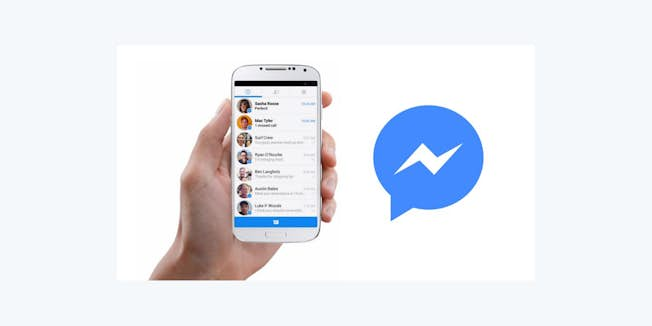
The concept is about as simple as it gets. You use Facebook Messenger to send messages to individual users.
But isn’t that kind of like email marketing?
Yes and no. Conceptually, it’s the same thing — a contact receives digital communication from a business.
But in practice, it’s very different. Messenger is conversational, interactive, and instantaneous. Email marketing tends to be more detached, impersonal and delayed. The differentiator is the use of chatbots.

Chatbots are automated messaging programs that simulate conversations, ask questions, gather feedback, send blasts, segment users, schedule appointments, make reservations, purchase items, track order status, provide feedback, provide 24/7 customer service, offer downloadable resources, drive traffic to landing pages, and — if a customer so desires — get in touch with a real human being.
Chatbots aren’t unique to Messenger, of course. But when it comes to Messenger marketing, they add atomic power to an otherwise average messaging experience.
A well-designed Messenger chatbot can effectively do the work of an entire marketing department.
Chatbots are what allow you to reach individuals in a messaging platform at scale.
So, why is Facebook Messenger marketing so important?
Listen to what the marketing community says about Messenger marketing.
Forbes has referred to Messenger Marketing as “the new way to do business.” Cutting-edge marketing research predicts that Messenger marketing “is set to become the world’s single biggest marketing channel in the next 5-7 years.” Inc. fawns over the trend by stating, “Messenger marketing has become so hot.”
Why all the giddiness?
First off, we can point to some big numbers — like the fact that according to Statista, there are 1.3 billion Facebook Messenger users, not to mention millions more on Facebook’s other messaging platforms

Those 1.3 billion users are having 7 billion conversations every day.
There’s a lot of activity on Messenger because there’s a lot of people on it. That’s one reason why marketers are salivating over its potential.
Beyond the statistics alone, there are two overarching reasons why Messenger is such a powerful marketing channel.
One is strategic, the other is tactical.
Strategically, it’s all about first mover’s advantage. Few businesses are using Facebook Messenger marketing or they aren’t using it to maximum potential.
For example, a business may have a contact button for Facebook Messenger. So what? Most businesses do. This is, at best, average.

Most businesses don’t have a chatbot connected that replies instantly, guiding users towards a solution.
Businesses who use Facebook messenger marketing with chatbots have a lot to gain right now while the arena is still uncrowded.
The second set of advantages is tactical.
Messenger marketing crushes email when it comes to engagement. A competitive email marketer can expect to achieve 5-10% open rates.
But with Messenger marketing, open rates skyrocket to 70-80% in the first hour.
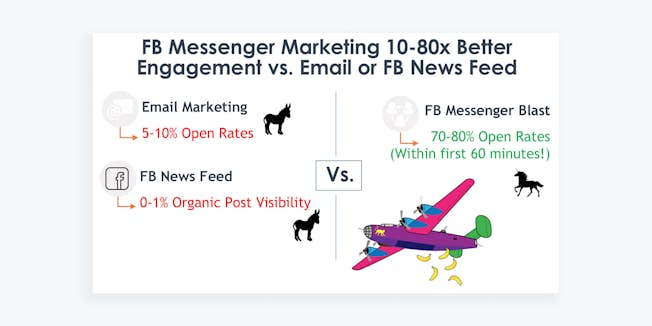
For example, one recent auto responder that we at MobileMonkey sent to new Messenger contacts gained a 78% open rate and an 11.6% response rate.
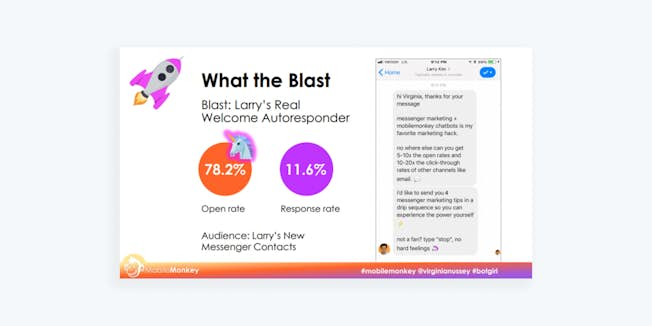
These are the unicorn-level results that forward-thinking marketers can expect to achieve using Facebook Messenger marketing.
What are some examples of Facebook Messenger marketing in action?
Chatbot-driven Messenger marketing has tons of applications. Let’s take a look at a few of them.
One of the best ways to begin using Messenger marketing is to add a widget to your website.
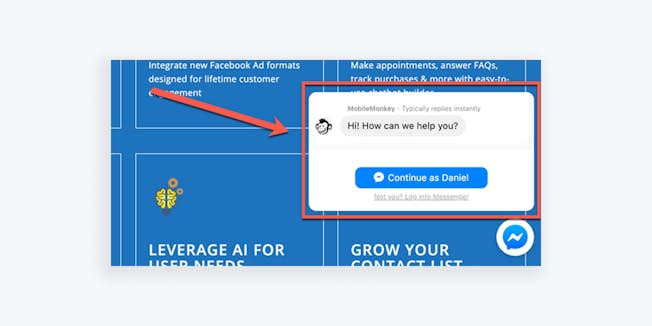
Once you add the widget, contacts can send Messenger chats to you without even leaving your website. Those messages aren’t lost, either. They’re updated in Facebook Messenger both on desktop and mobile.
If you integrate a Messenger chatbot on your website, you can auto-respond and help the user through your conversion funnel. Plus, that user is now a lead.
As you collect contacts on Messenger, you can send them messages. Here’s an example of a message, called a chat blast.
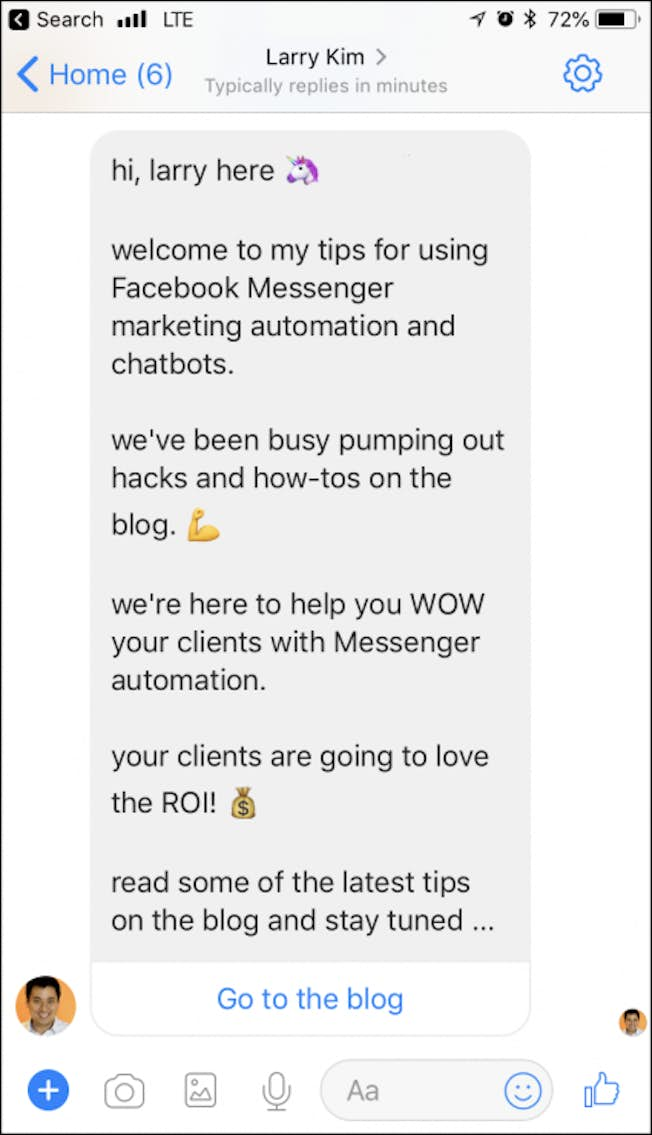
This chat blast initiated a drip sequence that I shared with opted-in contacts over the next few days.
One major advantage of chatbots is their usefulness for lead generation. Lead gen sequences can be as simple as offering people a download, a virtual event ticket, or some other offer.
Here is a screenshot of what this kind of chatbot looks like:
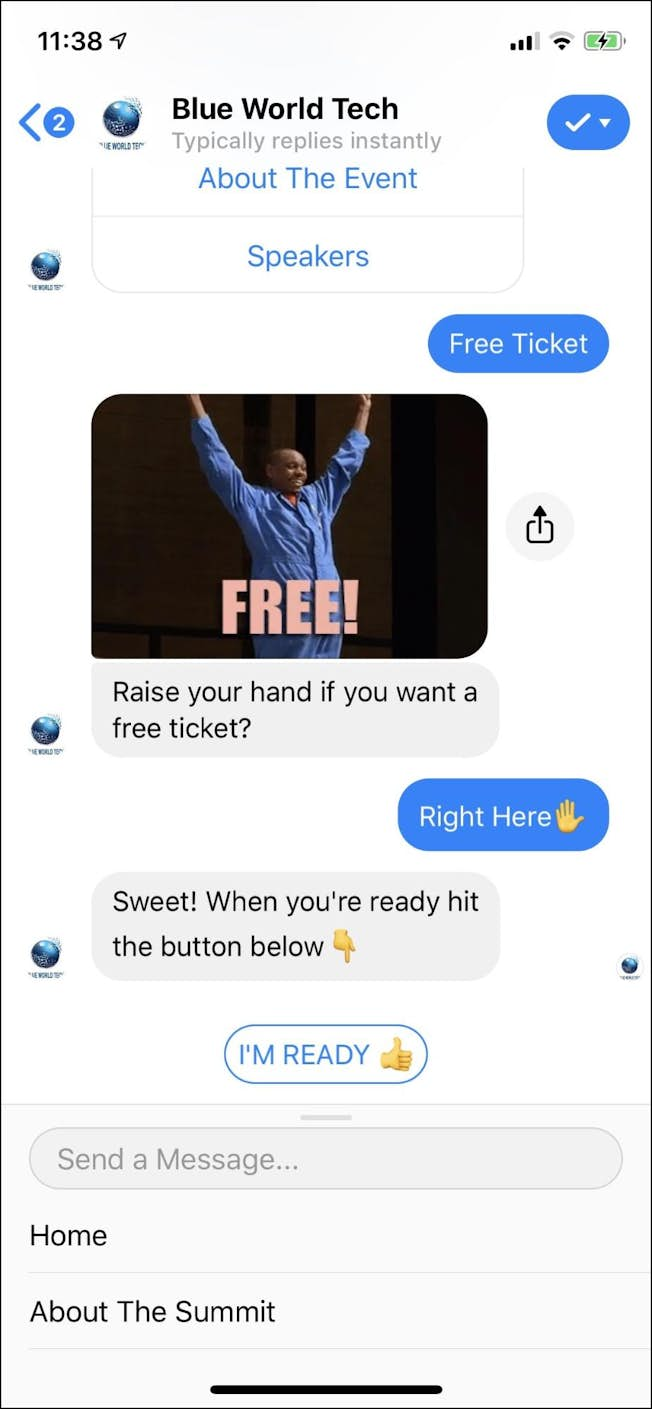
Chatbots are outstanding customer service agents. They work tirelessly around the clock, and if someone wants a human to step in, it’s easy for them to request it.
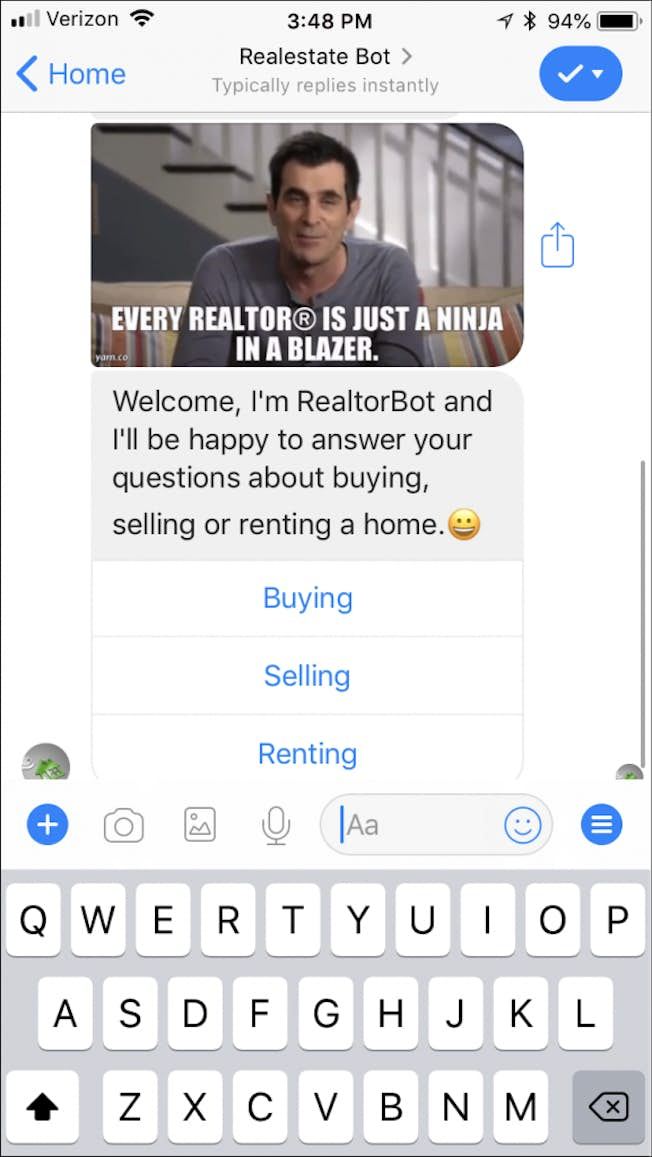
Facebook Messenger chatbots are incredibly versatile — lead generation, lead scoring, customer service, placing orders, requesting help, getting information, offering upgrades, setting appointments.
From the mundane (ordering pizza) to the marvelous (finding true love), chatbots make it happen.
Facebook Messenger marketing and GDPR
As with any online communication, it’s important to be aware of GDPR (General Data Protection Regulation) stipulations.
Facebook explains their responsibility regarding GDPR and the Messenger platform in depth on their website. When using Messenger marketing with chatbots, there are three guidelines to be aware of
- First, you must provide a clear opt-in for the contact to consent to you sending them messages.
- In the opt-in, you should also provide a clear opt-out. For example, “Type STOP to unsubscribe at anytime.”
- Finally, you should know how to remove a user from your chatbot platform. Anyone who wants should be able to be removed from your contact database. If you’re using a platform like MobileMonkey, for example, you would simply click “delete” next to the user’s name in the contact list.
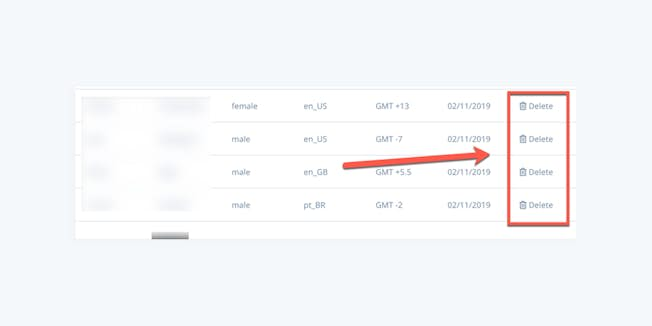
How do you get started with Facebook Messenger marketing?
As with any new marketing channel, you’ll need to select a platform to use and start learning it.
Facebook Messenger marketing has a shorter learning curve than most platforms for three reasons:
- Familiarity with the medium. Most of us know Facebook Messenger already, so it’s relatively straightforward to learn how to use it for marketing.
- Easy-to-use tools. Most chatbot builders are simple, involving drag-and-drop interfaces with zero coding.
- Strategically similar. Messenger marketing tactics have familiar marketing counterparts. If you’ve created an email drip sequence, then learning how to create a chat drip sequence will be easy. If you’ve handled customer service, you’ll understand chatbot-powered customer service.
Here is your four-step, quick start guide to using Facebook Messenger marketing.
1. You must have a Facebook business page.
If you don’t yet have one, get started here.
2. Select a chatbot builder.
It is possible to use Facebook’s native tools to run some very limited chatbot functionality, but anything beyond the basics is impossible without a chatbot builder. Some chatbot builders like MobileMonkey have free plans, so you don’t have to spend any money to get started.
3. Build your first chatbot.
The process of building a Messenger chatbot depends on which tool you’ve selected. Some tools allow you to be up-and-running with a simple chatbot in ten minutes.

4. Add a Facebook Messenger widget to your website.
Adding a Messenger chat widget to your website allows you to easily gain leads. It’s far easier to gain a Messenger contact than it is to earn an email address.
5. Build, learn, grow.
Creating a unicorn involves being delusional, finding your growth hacks, and repeating what’s successful.
The more you experiment with Facebook Messenger marketing, the more opportunities you’ll discover for growing your audience and increasing the effectiveness of your marketing.
Upgrade to Power Membership to continue
your access to thousands of articles, toolkits, podcasts, lessons and much much more.
Become a Power Member- Login
- View Courses
- - - -
- Courses
- Resources
- - - -
- My Account
- Change Password
- Logout





